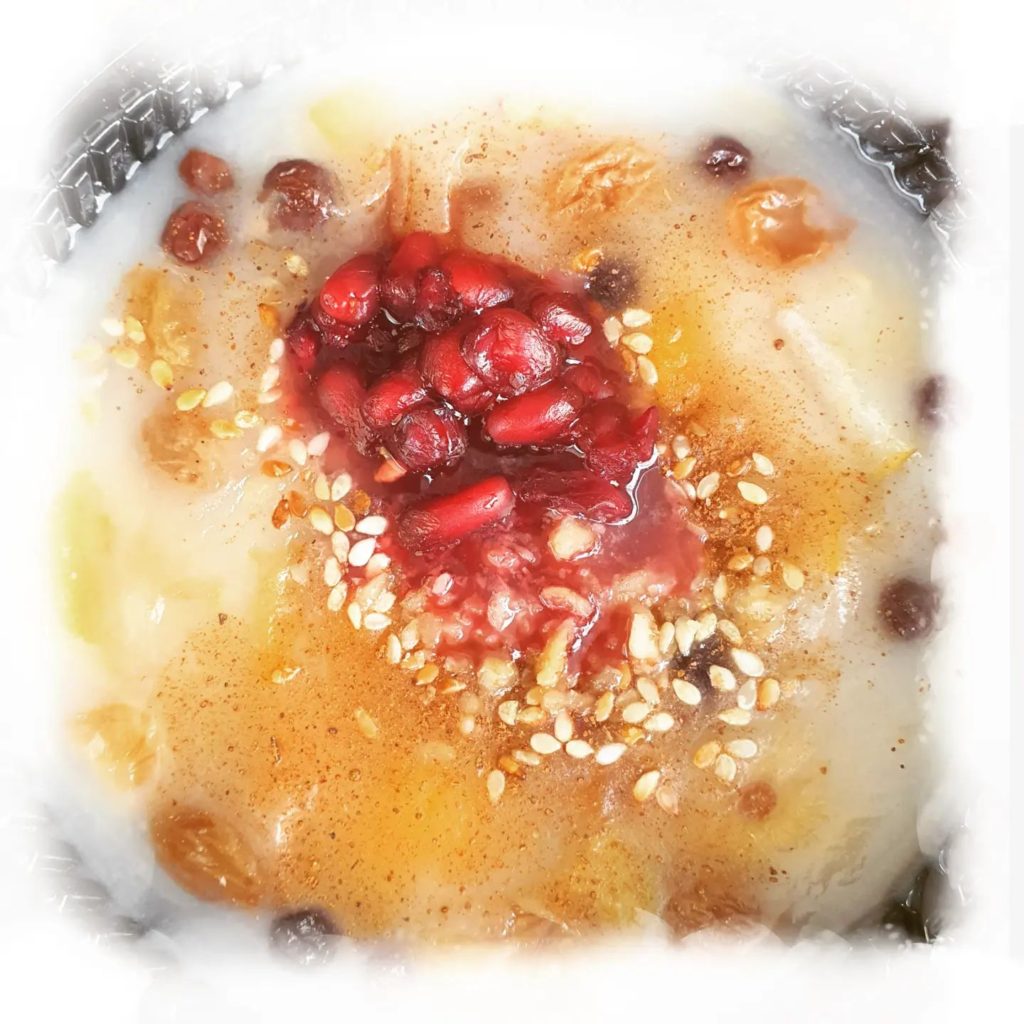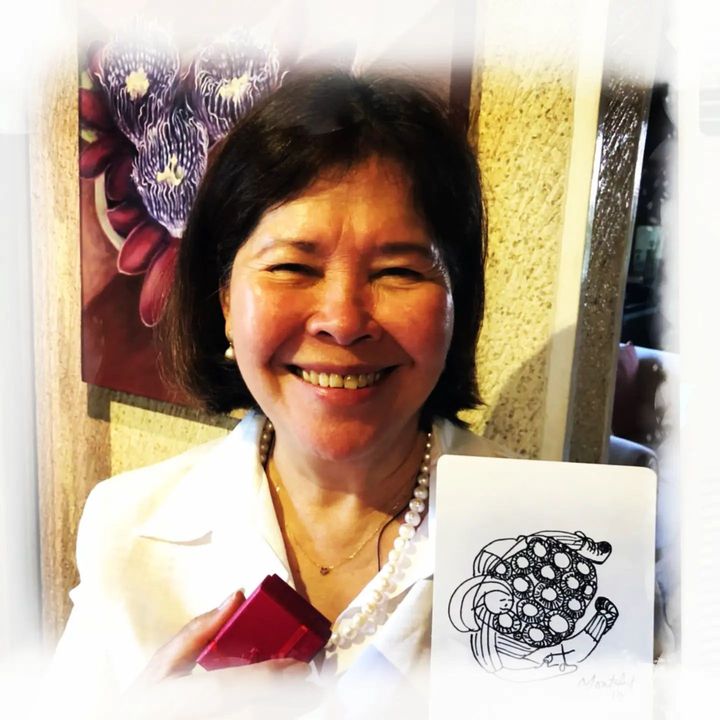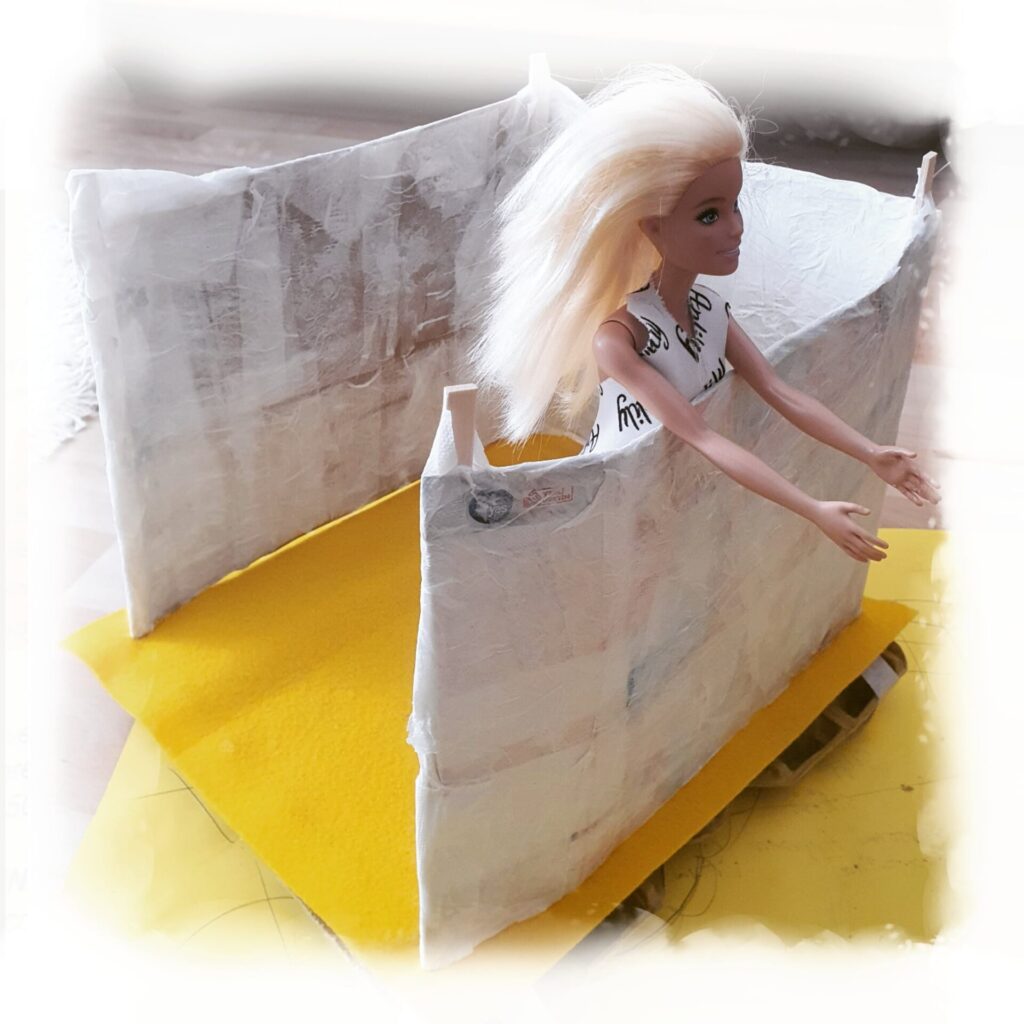Aşure, aka Noah’s pudding, is a sweet porridge made on the 10th day of Muharram, the first month of the Islamic calendar. Tradition says it’s the first meal Noah and his family made after the ark touched land again, and is believed to bring about peace and abundance. It’s a labor of love for sure, usually made with at least 10 ingredients (equivalent to the 10th day) comprised of various wheats, nuts and fruits. It takes 6 hours to make and is done in large batches for sharing with neighbors and the needy.
Tradition says it’s the first meal Noah and his family made after the ark touched land again, and is believed to bring about peace and abundance. It’s a labor of love for sure, usually made with at least 10 ingredients (equivalent to the 10th day) comprised of various wheats, nuts and fruits. It takes 6 hours to make and is done in large batches for sharing with neighbors and the needy.
This one has bulgur, garbanzos, white beans, baby raisins, apricots, pears, pomegranates, sesame seeds.


 It’s the closest I’ve eaten here to the Philippine ginataang halo-halo, a sweet rice dessert made with coconut milk and sweet fruits. I super miss ginataan, so I ended up eating most of this bowl.
It’s the closest I’ve eaten here to the Philippine ginataang halo-halo, a sweet rice dessert made with coconut milk and sweet fruits. I super miss ginataan, so I ended up eating most of this bowl. 
It was interesting that Aşure started popping up everywhere in the past week, from our daughter’s school, to gifts from neighbors, and to Sunday breakfast in restaurants. The feeling reminded me of bibingka and puto bumbong, rice desserts and treats which in my youth were only available on simbang gabi masses leading up to Christmas. Because they were seasonal, they were extra special, and it was well worth the effort to wake up at 4am to hear mass and then indulge in these treats afterwards.
Because they were seasonal, they were extra special, and it was well worth the effort to wake up at 4am to hear mass and then indulge in these treats afterwards.
 On White Day, let’s look at the seasonal dishes across cultures and the rituals behind them. These traditions are rich in time and intention. Keeping them seasonal is not so much about making them scarce, but more so about deeply aligning the intentions behind them with the movement and rhythm of nature.
On White Day, let’s look at the seasonal dishes across cultures and the rituals behind them. These traditions are rich in time and intention. Keeping them seasonal is not so much about making them scarce, but more so about deeply aligning the intentions behind them with the movement and rhythm of nature.





















 , and the…
, and the… 
 Here…
Here…